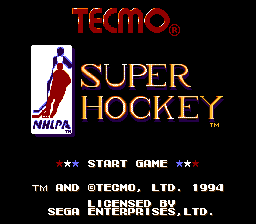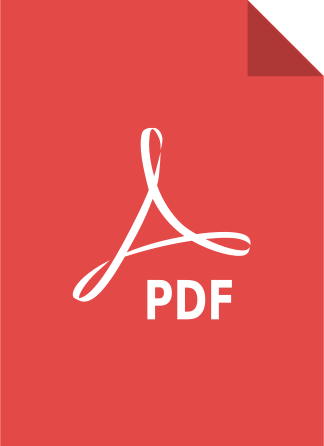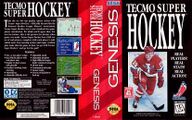Tecmo Super Hockey
From Sega Retro
| Tecmo Super Hockey | ||||||||||
|---|---|---|---|---|---|---|---|---|---|---|
| System(s): Sega Mega Drive | ||||||||||
| Publisher: Tecmo | ||||||||||
| Developer: Malibu Interactive | ||||||||||
| Licensor: National Hockey League Players' Association | ||||||||||
| Sound driver: GEMS | ||||||||||
| Genre: Sports (ice hockey) | ||||||||||
| Number of players: 1-2 | ||||||||||
|
This teeny-tiny article needs some work. You can help us by expanding it.
Tecmo Super Hockey is a 1994 hockey game for the Sega Mega Drive by Tecmo released exclusively in the US.
Contents
Production credits
- Lead Programmer: Andy Green
- Shell Programmers: Nigel Spencer, John Brandwood
- Animation: Damon Dubois
- Backgrounds: Chris Ward
- Producer: Bernie Whang
- Tecmo Producer: J. Nakamura
- Additional Design: Scott Sava, Andy Green, James Guintu, Steve Hughes, Justin Monast, Nigel Spencer, Bernie Whang
- Music and SFX: Chip Burwell
- Additional Programming: Mike Heilemann
- Additional Art: Paul Interrante, Joan Igawa, Kevin Mulhall
- Player Stats: Justin Monast
- Test Manager: Jason Uyeda
- Testers: James Guintu, Bill McDonald, Kevin Mulhall, Justin Monast, Scott Sava, Kevin Manning, Allen Fernandez, Jun Caliva, Bernie Whang
- Special Thanks: Mike Knauer, Mr. Nakata, Dimitri Criona, Emily Nelson, Joyce Kaehler, Dr. Russell Caram, Brian Clayton, Dave Keon
Magazine articles
- Main article: Tecmo Super Hockey/Magazine articles.
Promotional material
Print advert in Sega Visions (US) #22: "December/January 1994/1995" (1994-xx-xx)
Print advert in GamePro (US) #66: "January 1995" (199x-xx-xx)
Print advert in EGM² (US) #8: "February 1995" (199x-xx-xx)
Print advert in Sega Visions (US) #23: "February/March 1995" (199x-xx-xx)
Physical scans
| Sega Retro Average | |||||||||||||||||||||||||||||
|---|---|---|---|---|---|---|---|---|---|---|---|---|---|---|---|---|---|---|---|---|---|---|---|---|---|---|---|---|---|
|
| 56 | |
|---|---|
| Based on 5 reviews | |
Technical information
- Main article: Tecmo Super Hockey/Technical information.
References
- ↑ EGM², "February 1995" (US; 199x-xx-xx), page 105
- ↑ Game Players, "Vol. 8 No. 4 April 1995" (US; 1995-0x-xx), page 56
- ↑ GamePro, "May 1995" (US; 1995-xx-xx), page 100
- ↑ Mega Fun, "05/95" (DE; 1995-04-19), page 76
- ↑ Next Generation, "June 1995" (US; 1995-05-23), page 113
- ↑ Tricks 16 bit, "Tricks Sega Gold 800 igr" (RU; 1998-03-20), page 263
| Tecmo Super Hockey | |
|---|---|
|
Main page | Magazine articles | Reception | Region coding | Technical information | |
| Tecmo Super sports games | |
|---|---|
| Tecmo Super Bowl (1993) | Tecmo Super NBA Basketball (1994) | Tecmo Super Baseball (1994) | Tecmo Super Bowl II: Special Edition (1994) | Tecmo Super Hockey (1995) | Tecmo Super Bowl III: Final Edition (1995) | |
| Tecmo Super Bowl (Saturn) (unreleased) |




